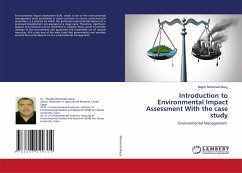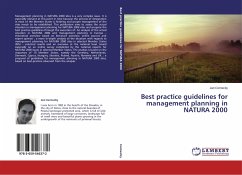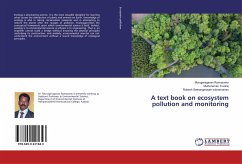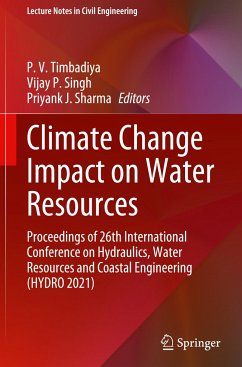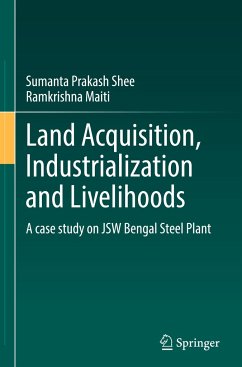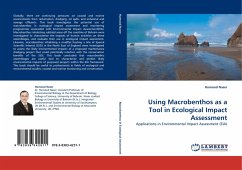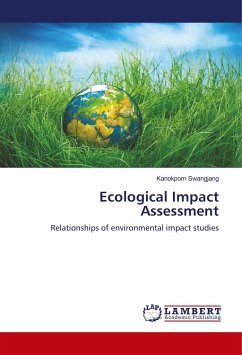
Ecological Impact Assessment
Relationships of environmental impact studies
Versandkostenfrei!
Versandfertig in 6-10 Tagen
24,99 €
inkl. MwSt.

PAYBACK Punkte
12 °P sammeln!
Analysis environmental impact assessment (EIA) by reviewing formal guidelines and environmental impact statements (EISs) as the products generated by them are aimed. Eight project specific guidelines and the ecological content of twenty three project EISs were analyzed applying review criteria. Relationships between guidelines and EISs were evaluated by statistical association. The results indicated that both aquatic and terrestrial ecological content flow from baseline field data to impact assessment did not differ significantly. Consequently, the interpretation of potential impacts had an in...
Analysis environmental impact assessment (EIA) by reviewing formal guidelines and environmental impact statements (EISs) as the products generated by them are aimed. Eight project specific guidelines and the ecological content of twenty three project EISs were analyzed applying review criteria. Relationships between guidelines and EISs were evaluated by statistical association. The results indicated that both aquatic and terrestrial ecological content flow from baseline field data to impact assessment did not differ significantly. Consequently, the interpretation of potential impacts had an insignificant effect on mitigation and monitoring identification. The sequence of content quality from the highest to the lowest was as follows; 'monitoring', 'mitigation', 'impact assessment' and 'baseline data', however, their relationships were opposite. Those indicate a need to develop ecological content, with appropriate treatment between environmental impact assessment and ecological approaches.



